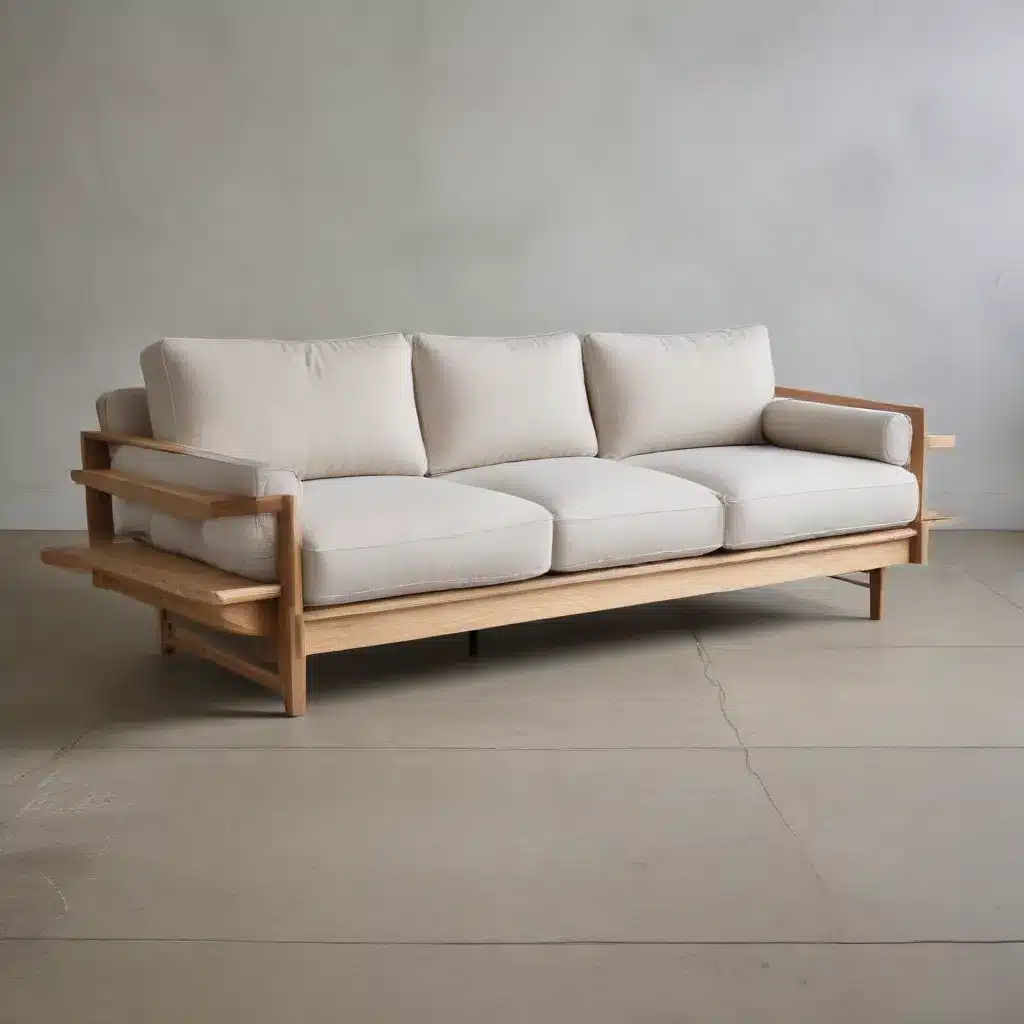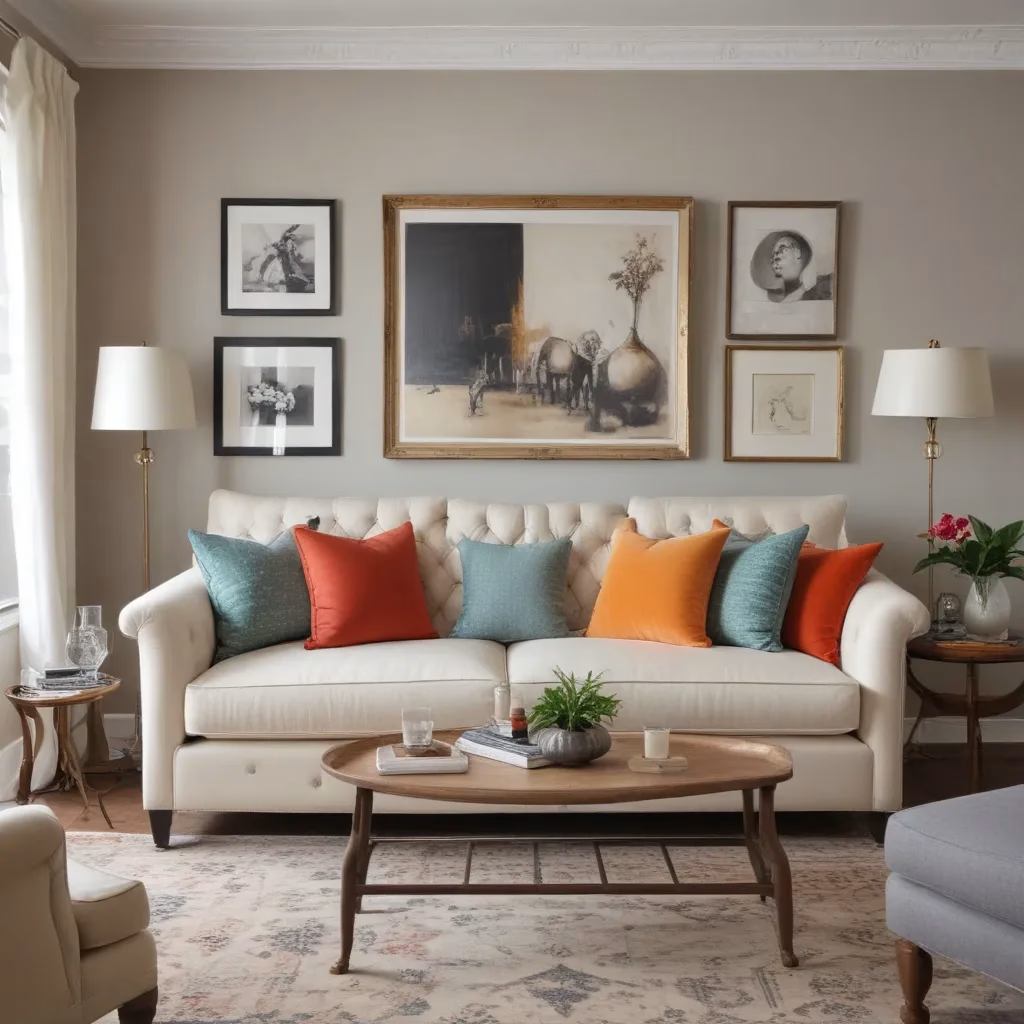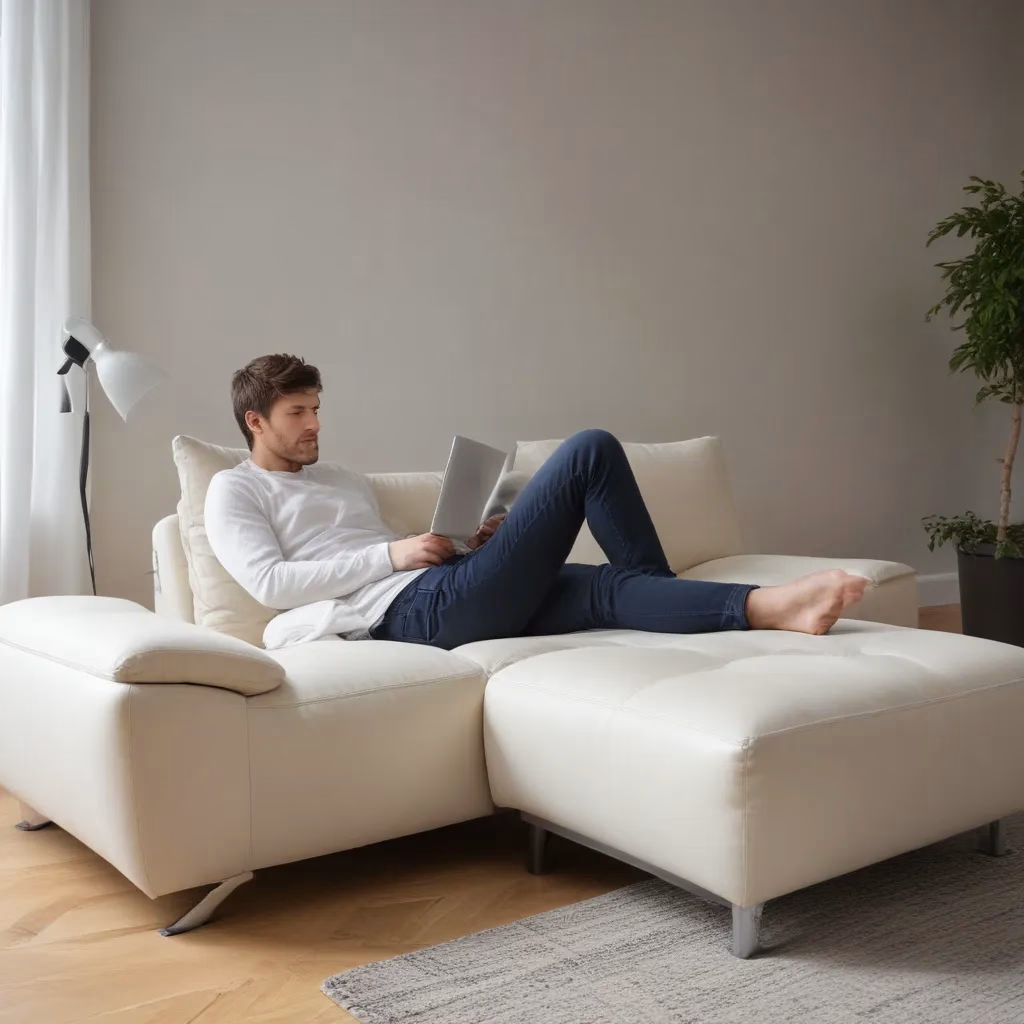
Understanding the Basics of Sofa Construction
When it comes to creating a custom sofa, knowledge is power. As a furniture specialist, I’ve seen countless DIY projects succeed or fail based on the builder’s understanding of basic sofa construction principles. Let’s start with the foundation.
The frame is the skeleton of your sofa. Traditionally, hardwoods like oak, maple, or beech are preferred for their durability and strength. However, in recent years, engineered woods have gained popularity due to their consistency and resistance to warping. When selecting your frame material, consider the long-term use of your sofa. A family room piece that will see daily use requires a sturdier frame than an occasional seating option in a formal living room.
Suspension systems are the unsung heroes of comfort. The most common types are eight-way hand-tied springs, sinuous springs, and webbing. Each has its pros and cons. Eight-way hand-tied springs offer superior support and longevity but are labor-intensive to install. Sinuous springs are more affordable and easier to work with, making them a popular choice for DIY projects. Webbing, while the least expensive option, may not provide the same level of support over time.
The cushioning is where you can really personalize your sofa. High-density foam is the industry standard, offering a good balance of comfort and durability. However, don’t overlook alternatives like down-wrapped foam or memory foam for a luxurious touch. Remember, the density of the foam affects both comfort and longevity. A higher density foam might feel firmer initially but will maintain its shape longer.
Selecting the Right Upholstery Fabric
Choosing the right fabric can make or break your sofa project. As someone who’s worked with countless materials, I can’t stress enough how crucial this decision is. It’s not just about aesthetics; durability, maintenance, and lifestyle all play a role.
For high-traffic areas or homes with children and pets, consider performance fabrics. These materials are engineered to resist stains, fading, and wear. They’ve come a long way in recent years, offering a wide range of textures and patterns that don’t sacrifice style for functionality.
Natural fibers like cotton and linen offer breathability and comfort but may require more maintenance. Synthetic options such as polyester and nylon are often more durable and easier to clean. Leather, while expensive, can be a great investment due to its longevity and ability to develop character over time.
When selecting your fabric, pay attention to the rub count. This measures the fabric’s durability, with higher numbers indicating greater resistance to wear. For a sofa that will see daily use, look for fabrics with a rub count of at least 25,000.
Color and pattern are where you can truly express your personal style. However, remember that bold choices may limit your ability to change your decor in the future. If you’re unsure, consider neutral base fabrics with colorful accent pillows that can be easily swapped out.
Tools and Techniques for DIY Sofa Building
Building your own sofa requires a mix of woodworking and upholstery skills. As someone who’s guided many through this process, I can attest that with the right tools and techniques, it’s an achievable project for dedicated DIY enthusiasts.
Essential tools include:
– A sturdy workbench
– Power drill and drill bits
– Circular saw or table saw
– Staple gun (pneumatic if possible)
– Sewing machine (for cushion covers and piping)
– Upholstery foam cutter
– Measuring tape and marking tools
One of the most critical techniques in sofa building is proper joinery. Mortise and tenon joints are ideal for frame construction, providing strength and stability. If you’re new to woodworking, consider using pocket hole joinery as a simpler alternative that still offers good strength.
When it comes to upholstery, even tension is key. Whether you’re applying webbing, attaching springs, or stapling fabric, maintaining consistent tension will ensure a professional-looking result. I always recommend practicing on a small project, like an ottoman, before tackling a full sofa.
Foam shaping is another crucial skill. Proper contouring of your cushion foam can dramatically improve comfort. Use an electric carving knife or a specialized foam cutter for clean, precise cuts. Remember to always cut foam slightly larger than needed, as it will compress over time.
Customizing Your Sofa Design
One of the joys of building your own sofa is the ability to tailor every aspect to your needs and preferences. Over the years, I’ve seen some truly innovative designs that perfectly fit unique spaces and lifestyles.
Start by considering the sofa’s primary function. Is it for lounging and TV watching? Formal entertaining? Or perhaps a multi-functional piece for a small space? Your answer will guide decisions on depth, height, and overall style.
Arm style can significantly impact both comfort and aesthetics. Traditional rolled arms offer a classic look, while square arms lend themselves to a more modern aesthetic. For a space-saving design, consider armless or low-profile options.
Back height and style are crucial for both comfort and visual appeal. A high back provides more support and can create a striking silhouette, while a lower back can make a room feel more open. Tufting, button details, or a sleek, plain back can each dramatically alter the sofa’s character.
Don’t forget about the legs! They’re not just functional; they contribute significantly to the overall design. Tapered wooden legs can add a mid-century modern flair, while metal hairpin legs offer an industrial touch. For a more traditional look, consider turned wood or bun feet.
Remember, custom design also means custom comfort. You have the freedom to adjust seat depth, cushion firmness, and even add features like built-in storage or reclining mechanisms. The possibilities are truly endless when you’re in control of the design process.
Sourcing Quality Materials for Your DIY Sofa
As a furniture specialist, I can’t overemphasize the importance of using high-quality materials in your DIY sofa project. The right materials not only ensure durability but also contribute significantly to the comfort and aesthetic of your finished piece.
For the frame, seek out kiln-dried hardwoods. These are less likely to warp or crack over time compared to their air-dried counterparts. If you’re opting for engineered wood, look for products with low formaldehyde emissions for a healthier home environment.
When it comes to foam, don’t be tempted by the cheapest options. Invest in high-resiliency foam with a density of at least 2.5 pounds per cubic foot for seat cushions. For back cushions, a slightly lower density (around 1.8 to 2.2 pounds per cubic foot) can provide a softer feel.
Upholstery fabric is an area where quality really shows. Look for fabrics specifically designed for upholstery use. These will have the necessary durability and often come with protective treatments. Many fabric showrooms offer remnants or end-of-bolt specials, which can be a great way to access high-end fabrics at a lower cost.
For springs and other hardware, professional upholstery supply stores are your best bet. They offer components designed for longevity and can often provide valuable advice on installation.
Don’t forget about the unseen materials. High-quality batting, lining fabrics, and even the right staples can make a significant difference in the final product. These might seem like small details, but they contribute to the overall quality and longevity of your sofa.
The Building Process: Step-by-Step Guide
Now that we’ve covered the basics, let’s dive into the actual building process. As someone who’s guided numerous DIY enthusiasts through their first sofa projects, I can assure you that while it’s a complex undertaking, it’s also incredibly rewarding.
-
Frame Construction: Start by cutting your wood pieces according to your design plans. Assemble the frame using your chosen joinery method. Remember to reinforce stress points, particularly where the arms meet the body of the sofa.
-
Adding Suspension: Install your chosen suspension system. For sinuous springs, ensure they’re evenly spaced and securely attached. If using webbing, maintain even tension as you weave and staple it in place.
-
Padding the Frame: Apply a layer of batting over the entire frame. This softens edges and provides a smooth base for your upholstery fabric.
-
Cushion Creation: Cut your foam to size for seat and back cushions. If desired, wrap the foam in a layer of Dacron or down alternative for added softness. Sew your cushion covers, leaving one side open for inserting the foam.
-
Upholstering the Frame: Begin with the inside back, then move to the arms, outside back, and finally the base. Work methodically, pulling the fabric taut and stapling securely. Pay special attention to corners and curves for a smooth finish.
-
Finishing Touches: Add decorative elements like piping or tufting. Attach your chosen legs and insert your newly created cushions.
Throughout the process, step back frequently to assess your work. It’s easier to make adjustments early on than to try and fix issues after everything is assembled.
Maintaining Your Custom-Built Sofa
Creating your own sofa is just the beginning. Proper maintenance will ensure your hard work pays off for years to come. As a furniture specialist, I’ve seen how simple care routines can dramatically extend the life of a piece.
Regular vacuuming is crucial, especially for fabric upholstery. Use upholstery attachments and get into all the nooks and crannies where dust and debris can accumulate. For leather sofas, dusting with a soft, dry cloth is usually sufficient.
Rotate cushions regularly to ensure even wear. This is especially important in the first few months when the foam is settling. If possible, flip cushions as well as switching their positions.
Address spills immediately. Blot (don’t rub) liquids with a clean, white cloth. For more stubborn stains, consult care instructions for your specific fabric type. Many performance fabrics can handle water-based cleaners, but natural fibers may require special care.
Protect your sofa from direct sunlight to prevent fading. If it must be placed near a window, consider using window treatments to filter harsh rays.
Periodically check and tighten any loose screws or bolts, especially on the legs. This prevents wobbling and potential damage to the frame.
Consider applying a fabric protector if you didn’t use a performance fabric. Reapply according to the product instructions, usually every 6-12 months.
Troubleshooting Common DIY Sofa Issues
Even with careful planning and execution, issues can arise with DIY sofa projects. As someone who’s seen and solved many of these problems, I can offer some advice on common troubleshooting scenarios.
Sagging Cushions: If your cushions are losing their shape, the foam may be too soft. Consider adding a layer of firmer foam or replacing the existing foam with a higher-density option.
Squeaky Frame: This often indicates loose joints. Disassemble the problem area, clean old glue residue, and reglue. Adding corner blocks can also reinforce weak points.
Puckered Fabric: This is usually due to uneven tension during upholstering. You may need to remove the fabric and reattach it, ensuring even distribution of tension.
Shifting Cushions: If cushions won’t stay in place, consider adding non-slip fabric to the bottom of the cushions and the corresponding area on the sofa base.
Uneven Legs: Use adjustable feet or add thin shims under shorter legs to level your sofa. This not only improves appearance but prevents undue stress on the frame.
Remember, most issues are fixable with a bit of patience and problem-solving. Don’t be discouraged if your first attempt isn’t perfect – each project is a learning experience.
The Future of DIY Furniture: Trends and Innovations
As we look to the future of DIY furniture, particularly in sofa construction, several exciting trends are emerging. From sustainable materials to smart technology integration, the possibilities for custom sofa creation are expanding rapidly.
Eco-friendly materials are becoming increasingly accessible to DIY enthusiasts. Recycled fabrics, sustainable wood sources, and plant-based foams offer environmentally conscious options without sacrificing quality or comfort. As a furniture specialist, I’m particularly excited about advancements in biodegradable upholstery fabrics that maintain the durability needed for everyday use.
Modular design is gaining popularity, allowing for greater flexibility and customization. This approach enables DIYers to create sofas that can be easily reconfigured or expanded as needs change. It’s a practical solution for those who move frequently or have evolving living spaces.
Technology integration is another area of innovation. While it might seem complex for a DIY project, simple additions like built-in USB charging ports or concealed power banks are becoming more common. For the more ambitious, there are even options for integrating heating elements or massage functions into custom-built sofas.
3D printing is also making waves in the furniture world. While not yet mainstream for full-scale sofa production, 3D-printed components like decorative elements or custom joints are becoming more accessible to home crafters.
As we continue to see advancements in materials and techniques, the potential for creating truly unique, personalized sofas at home will only grow. It’s an exciting time for DIY furniture enthusiasts, with the line between professional and home-crafted pieces becoming increasingly blurred.
In conclusion, building your own modern sofa is a challenging but incredibly rewarding project. It allows for a level of customization and personal expression that off-the-shelf furniture simply can’t match. Whether you’re a seasoned DIYer or a beginner with a passion for furniture, I hope this guide has inspired you to consider creating your own perfect sofa.
Remember, the key to success lies in careful planning, quality materials, and attention to detail. Don’t be afraid to start small, perhaps with a simple ottoman or chair, before tackling a full sofa project. And if you’re looking for more inspiration or specific product recommendations, be sure to check out Sofa Spectacular for a wide range of sofa styles and design ideas.
Happy building, and may your custom sofa bring you comfort and joy for years to come!



